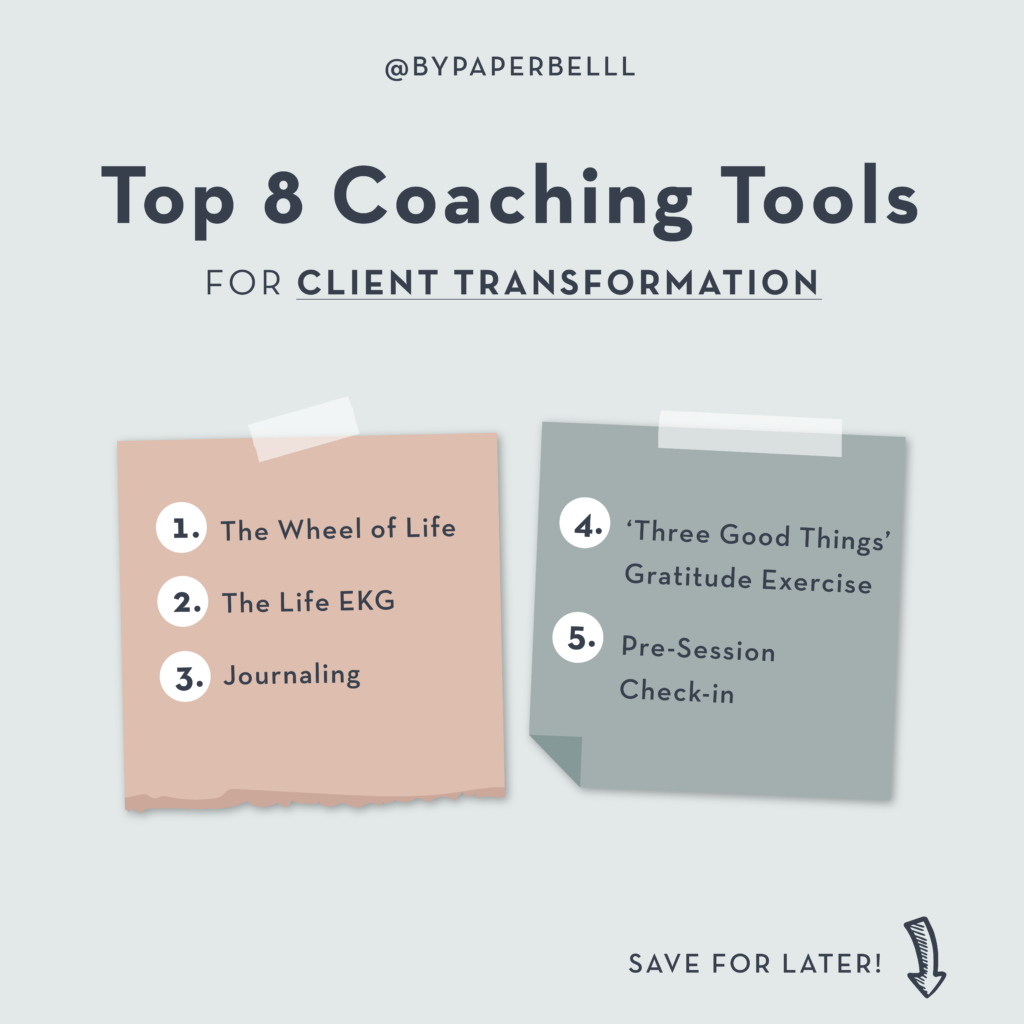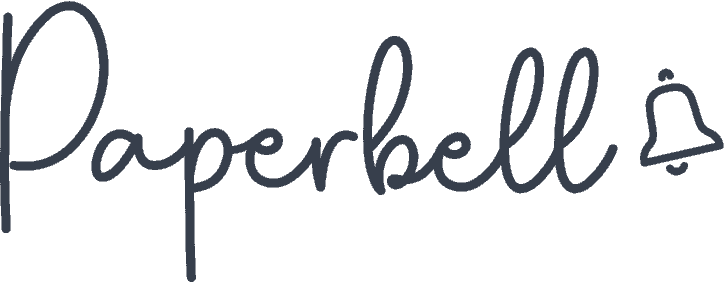As a coach, your capacity to transform your clients’ lives depends on how many coaching tools you have up your sleeve. You’ve likely been approached by clients who feel stuck in their current situation for years and expect you to work magic on them.
The good news is that with the right coaching tools, you can! These tried and tested coaching tools and techniques will let you unlock their full potential and guide them toward the success they seek.
So, Why is Coaching Important?
Despite its proven effectiveness, it’s not always easy to convince new clients to engage in life or business coaching if they haven’t tried it before (or had negative experiences). Many of them may confuse coaching with therapy or counseling and have some resistance, unaware of the benefits that can be garnered from truly effective coaching tools.
Whether this reluctance comes from a lack of information or is borne from the infamous “go-it-alone” mentality that can plague us in the 21st century, we felt that it was important to outline why coaching is utilized by many successful businesses around the world.
Life and business coaching offer clients…
- A strong sense of identity
- Enhanced mental health
- Improved self-confidence
- And decreased stress levels
Therefore, proper engagement with coach tools has the potential to see clients bridge the gap between where they currently are and where they want to be! In fact, the best coaches can guide their clients through major career and life changes, empowering them to conquer any challenge that may crop up on their journey.
Exciting stuff, right?
Why are Coaching Tools So Effective?
In layman’s terms, the optimal outcome from life coaching is honing skills that increase space for personal development.
We won’t delve too deeply into the psychology behind coaching (trust us, it’s rather extensive!), but as personal development is important for any individual looking to succeed in life, it’s unsurprising that using coaching tools often separates the wheat from the chaff.
However, to get straight to the point, we’ve summarized some of the top reasons clients choose to implement coaching tools into their business models!
- Coaching tools empower clients and allow them to discover their own personal strengths and weaknesses
- The implementation of coaching tools only occurs in a safe environment, which allows clients a safe space to grow and learn
- Life coaching has a distinctive client-centric approach that caters to an individual’s needs, strengths and wants
- Life coaching is a dynamic journey that constantly assesses a client’s circumstances for maximum effectiveness, so the process needn’t ever feel stale
Look at the most effective coaching tools to enhance your business.

Top 8 Coaching Tools to Add to Your List
The Wheel of Life
One of the main coaching tools that is utilized by life and business coaches is the Wheel of Life model. Sometimes, when we’re down and out, it can be incredibly difficult to pinpoint our satisfaction levels and what may be holding us back. Whether your personal satisfaction is borne from quality time with four-legged friends or from certain aspects of your career, the wheel is a critical coaching tool for those who struggle to visualize their current satisfaction levels versus the ones that they desire.
You can evaluate the following areas of your life through the Wheel of Life model:
- Relationships
- Environment
- Health and fitness
- Finance
- Career
You’re free to add other areas to your wheel as you see fit. For example, a more fleshed-out version of this model called Lifebook looks at 12 different categories.
By evaluating different goals and aspects in these areas, the Wheel of Life allows your client to identify personal strengths and weaknesses whilst also informing their life coach of areas that are lacking attention.
The Life EKG
If you’re unsure of where you are or wish to be, there’s no better coaching tool than The Life EKG.
This coaching tool is designed to map the highs and lows of one’s life and allows a client to see where their values and strengths were previously used to yield successful outcomes.
All you need for this tool is to draw a horizontal line across a sheet of paper and map your life chronologically. Though this may sound a bit daunting, you needn’t map your entire chronology from the womb and beyond!
Instead, simply pick your top three life highs and three crushing lows. Then, decide what about these moments made them definable as such. With a life coach, you can assess these moments, prevent the lows from re-emerging, and harness the energies that resulted in those highs.
Journaling
A reflective journal is one of the best coaching tools for gaining self-awareness and perspective. However, what makes journaling such a great coaching tool is the ability to assess and validate emotions.
So, if you feel a spark of inspiration, simply jot down those emotions and thoughts. Then, you can share those ideas and experiences with your life coach, allowing you both to assess where your best business ideas are coming from.
One of the most commonly used journaling techniques is called “morning pages,” and it was popularized by Julia Cameron in her book The Artist’s Way. Writing your morning pages simply means consistently filling up a few pages every morning (before you get swamped with work) with whatever comes to mind.
One of the best aspects of journaling as a coaching tool is that modern technology allows clients and coaches to sync journals. So, clients don’t have to wait for their next appointment for valuable feedback! A win-win if we may say so ourselves…
The ‘Three Good Things’ Gratitude Exercise
If you’ve got a gratitude journal, then you’ll absolutely want to level up with this nifty exercise. The Three Good Things exercise has been psychologically evaluated and is said to promote well-being through gratitude.
For this exercise, we recommend that the client write down three good things that went well on a particular day. Whether these are as large as reaching a business milestone or as small as receiving a passing smile on their commute, encourage them to write down whatever comes to mind.
Now, you’ll need to be consistent with this one if your client is looking to bridge the gap between their current emotional state and the one they would rather be in. Your client might be in a slump, finding it difficult to write happy thoughts. However, if they complete their ‘three good things’ daily, they will start feeling better in just a few days.
Over time, they’ll be able to garner positivity from each day, no matter how crummy it may have seemed in the moment.
Pre-Session Check-in
A great coaching tool that benefits both client and coach is the pre-session check-in. Not only does this allow both coach and client to visualize client goals before the session, but it also allows any roadblocks that have appeared during your time apart to be resolved more quickly.
But that’s not all! The pre-session check-in also helps the client to focus on any issues before the meeting, enabling more focused meetings to take place overall. Wahey!
Here are a few advantages of checking in with your clients before your session:
- It gives you space to acknowledge your client’s concerns
- It lets them reflect on their progress
- It can address any fears or limiting beliefs that haven’t come up before
- It can get any unrelated issues out of the way so they can fully focus on being there
- It works as a mindfulness exercise and centering for your client
If you want to make your pre-session check-in even more effective, you can ask your client to fill up a check-in sheet 24 hours before the session. This will give you enough time to review their progress and potentially come up with new tools to use in your next session with them.
Vision Boards
Vision boards are powerful tools used to manifest goals and aspirations. If your client is a visual person and has been missing a little mojo lately, creating a vision board can help them reconnect with their long-term aspirations.
Ask them to roll out a large piece of paper or canvas and collect any images that they feel speak to them. They can be cutouts from magazines or images collected and printed from the web. Once they have their pictures for their collage, they can stick them on their vision board and complement them with any words or drawings that inspire them and that represent their desires, dreams, and objectives.
The GROW Model
Though we’ve got a great post on the GROW model already, we felt that we’d quickly touch on it again! If you’re unfamiliar with the GROW model, then it’s well worth implementing as a coaching tool.
In case you’re wondering, the four letters stand for Goal, Reality, Options, and Wrap Up or Way Forward. Here’s how to use them.
- Goal: The first thing you’ll want to gauge is what are the goals your client wants to work on. Make sure these goals truly inspire them and that they are measurable and attainable.
- Reality: In the reality section, both you and your client assess where they currently are in life and how far they are from reaching their goals. Note any previous attempts to reach their goals (even if they weren’t successful), so they can learn from them.
- Options: This section evaluates what roads can be taken forward and overcome obstacles. What are the options your coachee can consider? What stands in their way? Once obstacles have been identified by the client, you can then assist in overcoming these issues.
- Way Forward: Finally, convert the objectives of your client into actionable steps that they can take to accomplish their goal. Set a definitive timeline for achieving these goals and discuss who they might need to ask help from to succeed.
Coaching Questions
Coaching questions are impactful tools that can be used throughout your sessions. They can help you get stagnant clients unstuck, dig deeper into the challenges they’re facing, and open their eyes to new possibilities.
Open-ended coaching questions help open up new perspectives, while closed questions urge your client to commit to a definitive timeline or action. It’s not uncommon that a single coaching question brings an “aha moment” for your client that changes their entire worldview and how they approach the problem they’re working on.
Miracle questions are known in coaching as a tool to remove any limitations that stand in the way of your coachee. These questions often propose a hypothetical scenario, whether having unlimited time and money or imagining that the goal they’re working on is already achieved. This opens up a new perspective for your client that they can use to find new ways to tackle their challenges and achieve their desired goals.
How Can I Ensure That Coaching Tools Are Useful For Clients?
As with any endeavor, coaching tools and their implementation will never be a one-size-fits-all process. All the coaching tools mentioned should be selected according to an individual’s goals, personality, and adherence to certain coaching tools and methods. For example, writing journal prompts may not be effective for a visual person, while visualization is unlikely to be the perfect solution for a wordsmith!
How Do I Manage Resistance In My Coaching Sessions?
In addition to judging an individual’s suitability for certain coaching tools, it’s also important to ensure that each party in the coach-client relationship is fully on board. Though people who have never worked with a life coach are likely to be somewhat nervous, if they’re adamant that coaching tools will fail, the relationship is unlikely to be fruitful!
As we’ve mentioned before, the coach-client relationship is very client-centric. Whilst the coach acts as a guiding light for the client, the client is still in control of the service. So, coaches shouldn’t be afraid to change their methods if current practices aren’t working with a new client.
A few ways you can manage resistance in your sessions are…
- Listen actively to your client and understand their concerns
- Don’t force anything on your clients they aren’t comfortable with, even if you’re sure that the tool is effective
- Give it time to establish trust and rapport with your coachee so they can feel safe to open up with you
- Explore your client’s core values to understand better how they want to be coached
- Celebrate the progress your client has made — sometimes, all they need is a bit of recognition
- Stay flexible in your coaching approach and adapt to how your client is responding to you
Of course, we highly recommend retaining suitable boundaries to avoid any unnecessary drama; there’s no harm in shaking things up a bit, as different coaching tools may just click with some clients more than others!
As the aim of coaching tools is to bridge the gap between where the client currently is and where they wish to be, ensure that you check in with your client frequently and ask questions of them on a regular basis.
In short, the goal of a coach is not to tell clients what to do but instead encourage them to create excellent solutions for tackling roadblocks. So, to ensure that the above coaching tools are as useful as possible, accountability and reflection should be heartily encouraged for all parties!
To wrap things up…
Being an excellent business or life coach is no mean feat.
While the basic principles of coaching are available for anyone to research, it takes the very best coach to empower clients who can truly seize the best life offers.
With so many coaching tools available, there are infinite possibilities for those looking to make strides in the business world. No coaching tools are necessarily better than others, but access to the best possible software, techniques, and models will only improve both the coach’s ability and the client’s potential.
So, whether you choose to use this blog post as a reference point for your next client or simply wish to learn more about coaching, we sincerely hope these tools serve as excellent additions to your coaching arsenal!
The Online Platform to Manage Your Entire Coaching Business
If you’re a coach, one of the best options out there is Paperbell’s very own coaching software! Designed to keep both client and coach fully aware of charges, sessions, and packages, it’s a great way to keep things moving smoothly without any nasty technical roadblocks! Paperbell handles your billing, scheduling, contract signing, intake surveys, and more – all in one easy workflow.

Editor’s Note: This post was originally published in September 2020 and has since been updated for accuracy.










